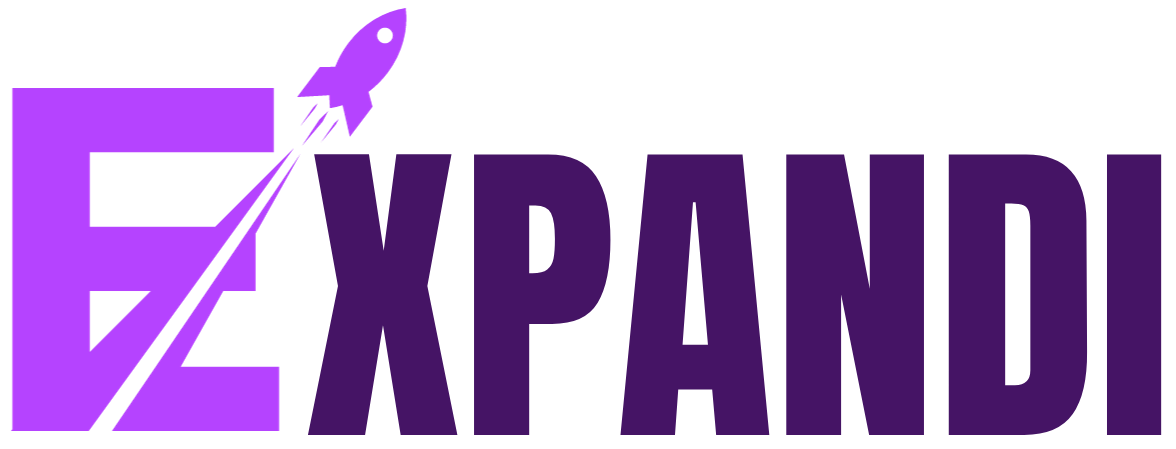LinkedIn is the undeniable powerhouse for professionals seeking to connect, engage, and grow their businesses. This dynamic platform presents an unprecedented opportunity to elevate your sales game to new heights. But how do you navigate the vast sea of content and stand out amidst the noise? Fear not, for this is where our ultimate guide to LinkedIn content strategy comes into play.
Whether you’re a seasoned sales expert or just starting out, this comprehensive blueprint will equip you with the tools and tactics needed to captivate your target audience, forge meaningful connections, and ultimately drive conversions. From crafting compelling posts and leveraging the power of video to harnessing the potential of LinkedIn’s algorithm, we leave no stone unturned.
Get ready to unlock the full potential of LinkedIn and supercharge your B2B sales approach with LinkedIn content strategy.
Steps for creating a content strategy for B2B sales
1. Identify your target audience
Identifying your target audience is the first step in creating an effective LinkedIn content strategy for B2B sales. Without a clear understanding of who your ideal customer is, it will be challenging to create content that resonates with them and ultimately drives sales.
To identify your ideal customer, start by analyzing your existing customer base. Look for commonalities in demographics, job titles, industries, and pain points.
Buyer personas should include information such as job title, industry, company size, goals, challenges, and preferred communication channels. Creating buyer personas will help you understand your customers’ pain points and needs and create content that addresses those pain points and provides solutions.
For example, if you are selling a SaaS product to marketing managers in the healthcare industry, your buyer persona might be “Mary, a marketing manager at a mid-sized hospital. Mary is responsible for driving patient acquisition and retention, but she struggles with a limited budget and resources. She is interested in innovative solutions that can help her increase patient engagement and drive revenue.”
2. Types of content to create
Creating different types of content is crucial for a successful LinkedIn content strategy for B2B sales. It allows you to engage with your target audience in different ways, depending on where they are in the buyer’s journey. Here are some types of content to consider creating:
- Educational Content
Educational content is designed to inform and educate your target audience about a specific topic or industry. This type of content can take the form of blog posts, how-to guides, whitepapers, or e-books. By providing valuable educational content, you establish yourself as a trusted source of information and build credibility with your target audience.
For example, you can create a LinkedIn post on how sales professionals should master the art of cold calling.
- Thought Leadership Content
Thought leadership content is designed to position your brand as a leader in your industry. This type of content can take the form of opinion pieces, case studies, or interviews with industry experts. Thought leadership content is essential for building brand awareness and establishing your brand as a go-to resource in your industry.
- Promotional Content
Promotional content is designed to promote your products or services. This type of content can be product demos. While promotional content should be used sparingly, it is essential for driving sales and generating leads.
- User-Generated Content
User-generated content is created by your customers and can take the form of reviews, testimonials, or user-generated social media posts. User-generated content is a powerful way to build social proof and establish credibility with your target audience.
- Visual Content
Visual content is any type of content that uses images or videos to convey a message. Visual content is essential for capturing the attention of your target audience and can be highly engaging.
By creating a mix of different types of content, you can engage with your target audience in a variety of ways and meet them where they are in the buyer’s journey.
3. Develop a content calendar
Developing a content calendar is an essential component of your LinkedIn content strategy for B2B sales. Here are some tips for developing a content calendar:
- Determine the frequency and timing of posts
Decide how often you will post and what days and times you will publish your content. This will help you stay consistent and ensure that your content is being seen by your target audience.
- Plan ahead
Create a content calendar in advance for a month. This will help you stay organized and ensure that you have a steady stream of content to publish.
- Incorporate different types of content
Use your content calendar to plan out a mix of different types of content, including educational content, thought leadership content, promotional content, user-generated content, and visual content.
- Monitor and adjust
Keep track of how your content is performing and make adjustments to your content calendar as needed. This will help you refine your LinkedIn content strategy and ensure that you are meeting the needs of your target audience.
By developing a content calendar, you can ensure that your LinkedIn content strategy for B2B sales is consistent, aligned with your business goals, and engaging for your target audience.
4. Optimize for search engines
To ensure that your LinkedIn content is seen by your target audience and optimized for search engines, it’s essential to incorporate relevant keywords, create optimized headlines and descriptions, and maximize engagement with multimedia content.
Here are some tips for optimizing your LinkedIn content for search engines:
- Incorporate relevant keywords
Research relevant keywords that your target audience is searching for and incorporate them into your content. This will help your content show up in search results when users search for those keywords.
For a B2B sales business focused on CRM software, incorporating relevant keywords like “CRM solutions,” “sales automation,” and “customer relationship management” into your content can help improve visibility. For instance, a post could mention, “Discover how our CRM solutions streamline sales processes and enhance customer relationship management.”
- Create optimized headlines and descriptions
Your headline and description are the first things users will see when they come across your content. Create attention-grabbing headlines and descriptions that include your target keywords and accurately describe your content.
Craft an attention-grabbing headline like “Unleashing Sales Potential: The Ultimate Guide to Sales Automation and CRM Solutions.” In the description, provide a concise overview of the content, incorporating keywords and emphasizing the value it offers to B2B sales professionals.
- Maximize engagement with multimedia content
Incorporate multimedia content, such as images, videos, and infographics, into your LinkedIn posts. This will help increase engagement and time spent on your content, signaling to search engines that your content is valuable and relevant to your target audience.
Include an eye-catching infographic highlighting key statistics on the impact of CRM software on sales productivity. Add a video testimonial from a satisfied client sharing their success story with your CRM solution. These multimedia elements not only engage viewers but also make the content more shareable and appealing to search engines.
- Monitor and adjust
Keep track of how your content is performing and make adjustments as needed. Use analytics tools to track engagement, clicks, and views and adjust your content strategy accordingly.
Regularly analyze the performance of your LinkedIn content using analytics tools. If a particular post with a video receives significantly higher engagement and views compared to text-based posts, adjust your content strategy to incorporate more video content. Similarly, if certain keywords are driving more traffic to your content, focus on creating more content around those keywords.
By optimizing your LinkedIn content for search engines, you can ensure that your content is being seen by your target audience and that it’s providing value and engaging content that encourages them to take action.
5. Build Thought Leadership
Building thought leadership on LinkedIn is an effective way to establish your expertise in your industry, engage with your audience, and drive engagement and conversions. Here are some tips for building thought leadership on LinkedIn:
- Establish expertise in your industry
Share your expertise by creating and sharing educational and informative content. Write articles, create videos, or share industry news to establish yourself as an authority in your field.
As a B2B sales consultant, you can create and share educational content such as an article titled “5 Strategies to Boost B2B Sales Conversions” or a video series on effective sales techniques. By consistently sharing valuable insights and actionable tips, you position yourself as an expert in the field of B2B sales.
- Leverage employee and customer advocacy
Encourage your employees and customers to share your content and engage with your posts. This can help increase your reach and credibility.
Encourage your sales team and satisfied customers to share their success stories or testimonials on LinkedIn, highlighting the positive impact your solutions have had on their businesses. For instance, an employee can write a post titled “How Our B2B Sales Training Program Helped Triple Our Closing Rates,” while a customer can share a post praising your services and the results they achieved.
- Engage with industry influencers
Engage with industry influencers by commenting on their posts, sharing their content, and tagging them in your posts. This can help you build relationships with influencers in your industry and increase your reach.
You can also automate these activities with the help of expandi. It is a LinkedIn prospecting and automation tool that helps users create automated and targeted campaigns on LinkedIn. You can use these campaigns to automate several actions, such as following a profile, liking a post, endorsing someone’s skill, and so on.

- Stay active
Stay active on LinkedIn by engaging with your audience, responding to comments, and participating in groups. This can help you build a community around your brand and establish yourself as a thought leader in your industry.
By following these tips, you can establish yourself as a thought leader on LinkedIn and build credibility and trust with your audience. This can help you drive engagement, generate leads, and ultimately drive revenue for your business.
6. Measure Success
Measuring the success of your LinkedIn content strategy is crucial to determine whether your efforts are delivering the desired results. Here are some key metrics to track and analyze:
- Engagement
Track the number of likes, comments, shares, and followers your content is generating. Analyze the engagement rates and identify which types of content are performing well.
- Lead generation
Monitor the number of leads your content is generating. This can be done by tracking the number of clicks to your website, the number of form submissions, and the number of direct messages received.
- Conversion rates
Analyze the conversion rates of your LinkedIn campaigns. This can include the number of leads that turned into customers or the number of webinar attendees that converted into paying customers.
- Adjust the content strategy
Based on the performance of your content, adjust your content strategy accordingly. For example, if certain types of content are not generating engagement, try different formats or topics. If your lead generation metrics are not meeting your goals, consider adjusting your messaging or targeting.
By regularly monitoring and analyzing these metrics, you can optimize your LinkedIn content strategy for success. Remember, success on LinkedIn is not just about generating likes and comments but ultimately driving leads and revenue for your business.
Wrapping Up
A strong LinkedIn content strategy is essential for B2B sales success. By identifying your target audience, creating valuable content, developing a content calendar, optimizing for search engines, and building thought leadership, you can attract and engage with potential customers on the platform. Measuring the success of your content strategy through metrics such as engagement, lead generation, and conversion rates will allow you to make adjustments and optimize your approach.
Remember, LinkedIn is not just a platform for job seekers and recruiters. It is a powerful tool for B2B sales professionals to connect with prospects, establish thought leadership, and drive revenue. With the right content strategy in place, you can leverage the platform to its full potential and achieve your sales goals. So, don’t wait any longer. Start developing your LinkedIn content strategy today and see the impact it can have on your business.
Also, to boost your lead generation activities, sign up for expandi today!








